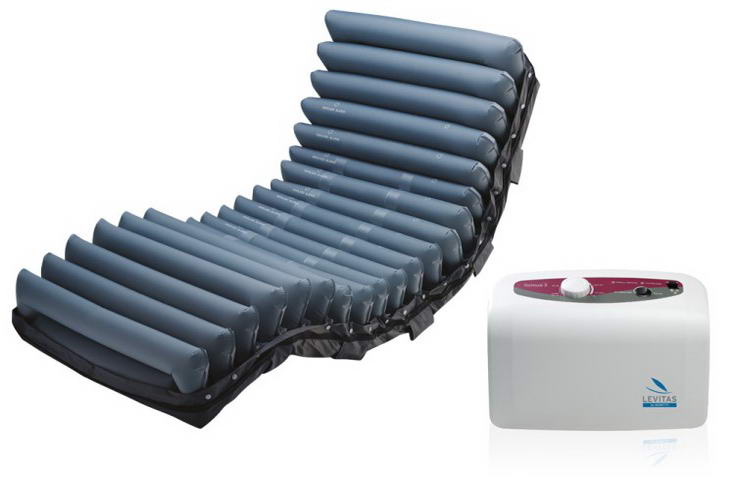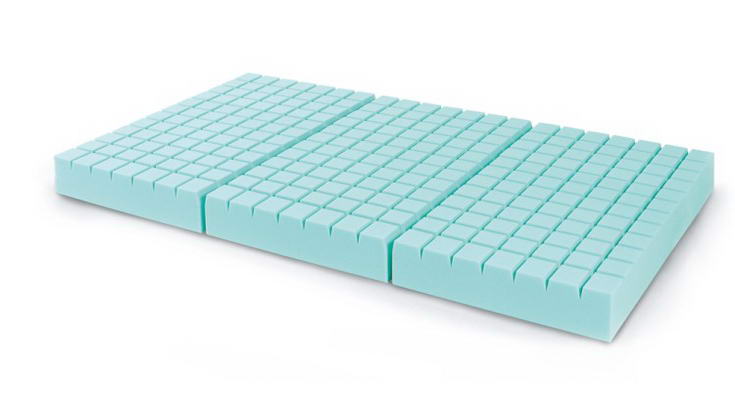The use of a suitable medical device, in many cases, can really make a difference in the quality of life of our loved ones.
If we think for a moment about the elderly or people with disabilities or illnesses that force them to spend a lot of time in bed, we cannot ignore, for example, the comfort resulting from the use of an anti-decubitus mattress and an appropriate bed frame.
Anti-decubitus mattresses are medical devices that can prevent the onset of wounds due to friction or rubbing. By using them you can obviate excessive skin crushing due to long stays in hospital, avoiding the occlusion of the subcutaneous capillaries that can lead to oedema or necrosis.
What are decubitus sores?
One of the disadvantages of a long stay in hospital is the risk of suffering the formation of lesions in the skin, in the deeper layers of the skin or, in the most severe cases, in the muscles and bones.
As there are various types of lesions, with consequent levels of severity, we use a classification to indicate the four different stages of severity:
Level I or low risk
The lesions classified in this stage correspond to a state of inflammation in the more superficial layers of the epidermis. Even if “low risk” individuals still require specific attention, they have good conditions of mobility and autonomy.
Level II or medium risk
The lesions identified in this stage affect the deeper layers of the dermis. Treatment and specific attention in choosing a bed and mattress become fundamental in trying to resolve decubitus sores. “Medium risk” individuals with only limited and occasional mobility, need special attention as regards posture and moisture conditions.
Level III or high risk
The third level involves lesions that have resulted in the destruction of the subcutaneous tissue and adipose tissue. The high-risk individuals have very limited mobility and autonomy, are exposed to the risk of friction and slipping during movements and require constant attention to the moisture conditions of the skin.
Level IV or very high risk
The fourth level indicates the highest level of severity. In this case, the lesions extend as far as the muscles and bones. Individuals exposed to “very high risk” are those who are totally bedridden and immobilised. They require continuous specialist assistance with movements and in maintaining posture and in managing the moisture conditions.
It is precisely by means of identifying beforehand the level of risk, or ex post the level of severity of the lesion, we can identify with specificity the most suitable resting solution for the needs of our loved ones: being able to minimise the pressure and friction between skin and mattress, improving body perspiration by reducing moisture and maintaining correct posture.
Let’s take a look at the main types:
Air-bubble mattress

Air-bubble mattresses that are placed on top of the traditional mattress, are recommended for the prevention and treatment of stage I decubitus sores. In order to use them, they need to be connected to a compressor in order to adjust the pressure depending on the patient’s weight. When being used, they are inflated and deflated alternately and can perform a delicate massaging.
Mattress with interchangeable elements

Mattresses with interchangeable elements may correspond to the specific needs of prevention and treatment of decubitus sores of stages II, III and IV, in the event of long-term therapy and home therapy.
The height of the mattress, which can be adjusted with the Domus di Levitas range from 10.2 to 25.4 cm, makes it less necessary to have an underlying mattress.
Domus consists of interchangeable, waterproof and breathable elements in Nylon/TPU that vary in number between 17 and 20, and of a compressor with pressure adjustment. The first elements of the mattress simulate the softness and stability of a normal pillow, The central body is perforated to ensure forced ventilation (or low air loss) and has alternating 2- or 3-way operation and “Cell-on-cell” technology for the Domus 4 and Domus Auto models. The Cell-on-Cell technique divides the section into two individual modules: the lower one remains constantly inflated so as to avoid the “Bottom-out” sinking effect and ensure safety in the event of a power failure.
This type of mattress is completed with a breathable and waterproof blanket in Nylon/PU and has a rapid deflation system via the CPR (Cardio Pulmonary Resuscitation) valve which allows the mattress to be deflated immediately if necessary.
Lastly, the compressor, which is compact, lightweight and low-noise, is equipped with a visual and audible alarm that signals low pressure, power failures and need for maintenance, and also has an interchangeable air filter.
Composite, ventilated mattress in fire retardant polyurethane foam

Mattresses in polyurethane foam, to be used in place of or in addition to the “common” mattress, allow optimum ventilation between the mattress and the patient.
Their distinguishing features include the possibility to provide different densities in the head, trunk-pelvis and feet areas, responding to the specific demands of comfort, support and prevention of bedsores.
Another important element is the type of processing used to treat the polyurethane foam: truncated pyramid or ovoid.
Lastly, Levitas is noted for its wide range of fire retardant mattresses, belonging to the 1 IM fire resistance class.
Mattress in silicone hollow fibre

Silicone hollow fibre mattresses are an excellent solution for the prevention of decubitus sores. The main property of silicone hollow fibre is its resilience and therefore its ability to return to the original shape even after significant stress or pressure, thereby maintaining its durable softness and elasticity.
The hollow fibre also features high-powered thermal insulation, which allows insulation against the cold and heat.
The other advantages include its breathability, also guaranteed by the presence of a cotton lining; and the equal distribution of weight, avoiding dangerous vein occlusions.
For more information, have a look at our product catalogue or ask for the Levitas range by Moretti SpA at your usual orthopaedics and healthcare store.










